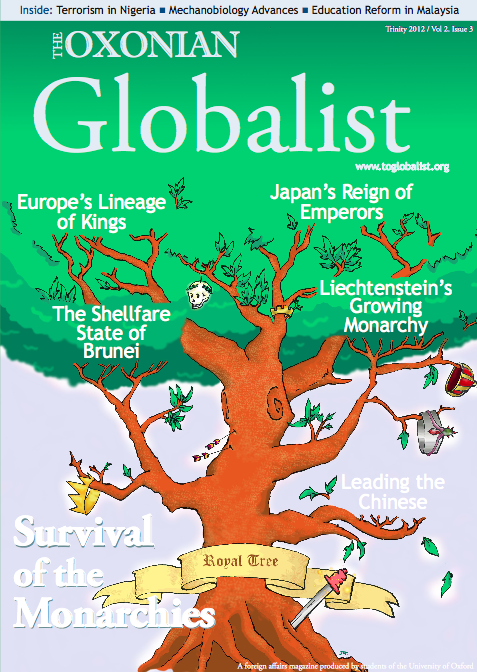India has long been viewed as a land of rural splendour. Before we were bombarded with images of Slumdog Millionaire, which presented an India replete with urban slums and high-rise buildings, the enduring public image was one of a country largely without electricity and basic amenities.
Yet even as India inches her way towards becoming a global economic power, Indian policy remains predominantly orientated towards its rural areas, often at the expense of urban development. The focus on rural India is not without reason – nearly 70% of the country’s population lives in the countryside – but it belies the fact that the cities, according to recent research, are growing fast.
A McKinsey Global Institute Report from 2010 projects that by 2030, 40% of India’s population will live in cities. Currently 13 cities have populations of over 4 million. In such a climate, politicians in India will need to engage with cities on two levels: first to improve local governance, and second to develop the crumbling infrastructure.
The Jawaharlal Nehru Urban Renewal Mission (JNNURM) is one such policy initiative instituted by India’s central government in 2005. With a total investment of over $20 billion, it seeks to create “economically productive, efficient, equitable, and responsive cities”. Its wide-ranging focus covers basic amenities to the poor and infrastructure development, among other efforts. The policy initiative is in line with the 74th Constitutional Amendment of India, which was passed in 1992. This legislation sought to decentralise urban governance, and enable a regional approach towards urban development that increased the local governments’ accountability to citizens.
When in Bangalore
Bangalore in southern India is most famously associated with India’s information technology boom, and has earned itself the sobriquet of India’s Silicon Valley; the city is currently the third most populous after Mumbai and New Delhi. It has also received the most funding from the JNNURM. However, basic services remain staggeringly underdeveloped; water is a major area of concern, according to a Service Level Benchmarking Report conducted by the central government. Bangalore’s water coverage system extends to only 50.8% of its full potential, and ordinary citizens only have access to three hours of continuous water supply a day.
A study done by Janaagraha, a Bangalore-based NGO that works with urban governance issues, posits that the main problem is that municipal governance is “crowded”. What this essentially means is that there are multiple municipal agencies with competing jurisdictions, and this gives rise to conflicts, stalling progress.
Taking stock of recent developments across the two most important sectors of city government, roads and water, one soon discovers that while there are specialised agencies handling both, there is a gaping hole in terms of co-ordination between them. Statutorily defined roles exist, but there is a lack of legal guarantees for inter-agency interface, as well as inertia on the part of the agencies to take responsibility for engaging with each other.
The Bruhat Bengaluru Mahanagar Palike (BBMP) is the city’s urban local body, and the only municipal agency that consists of directly elected representatives. The Bangalore Water Supply and Sewerage Board (BWSSB) is responsible for maintaining the city’s water supply, and acts as a subsidiary to the state government – which is also in charge of coordinating any disputes between the two, further complicating matters. In early 2011, the BWSSB began a water drainage project in the Trinity Circle area of the city, which left the roads in complete disarray a whole year after the project had begun. While the BWSSB has the legal authority to dig up roads to lay pipes, it cannot repair roads. The BWSSB alleges that it transferred money to the BBMP to repair the road, but the BBMP claims otherwise.
The Times of India spoke with a number of residents in the area who expressed frustration at their predicament. Two presidents of resident associations, Anil Sahai and Sharath Kaul, claimed they were in the process of taking up the matter with their local Member of Legislative Assembly and other authorities in the state government, but if they failed in these attempts, they would “block the road and play cricket on it”.
Not Cricket
In June this year, the Hindu ran an investigation on the Arcot Char Sreenivas Street, an important arterial road that suffers from multiple problems including water-logging and uncollected garbage, both of which pose severe public health hazards. They discovered, however, that the BBMP not only believes that the road does not come under their jurisdiction, but is unaware which agency should be responsible for its upkeep. As the primary urban local body, and the only elected one, such mismanagement on part of the BBMP does not bode well for the future of urban development in Bangalore.
Incidents like these illustrate that urban governance in India remains highly stratified, making it particularly difficult to address issues. If governmental agencies are unclear about the duties they are meant to perform, and are unwilling to liaise with other agencies, citizens cannot air concerns or have problems resolved; a conspicuous failure of democratic action in the world’s largest democracy.
Cities like Bangalore, and other major metropolitan areas, need not only to strengthen their local governance, but also empower citizens to truly do justice to the nature of participatory democracy. Urban agglomerations are a growing reality in India, and to do justice to the immense significance they hold for the country, major policy and legal reforms are necessary. They must ensure that the money being invested in infrastructure development is not in vain, and enable a sustainable urban environment along with a more involved democratic culture among the citizenry.




